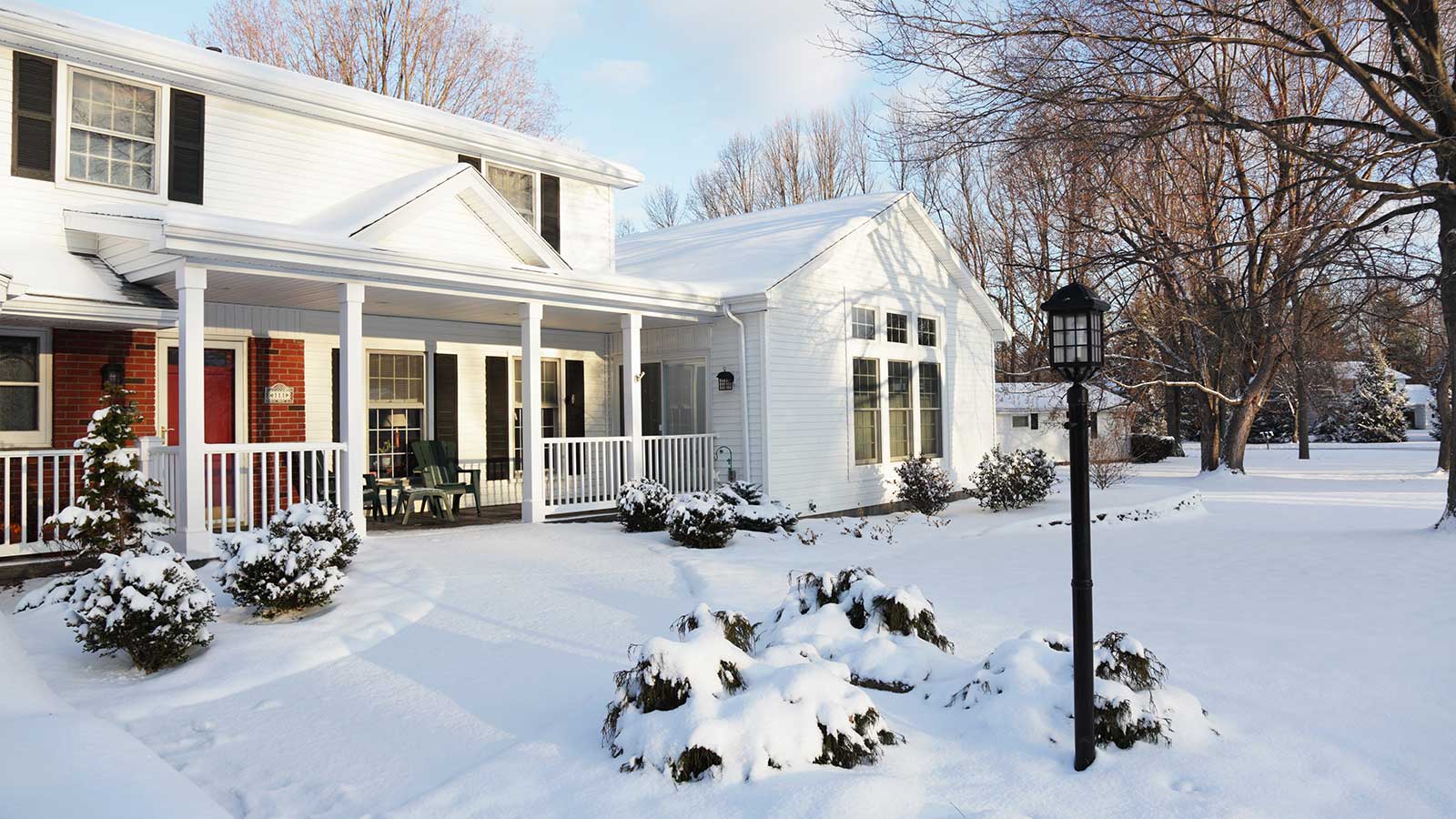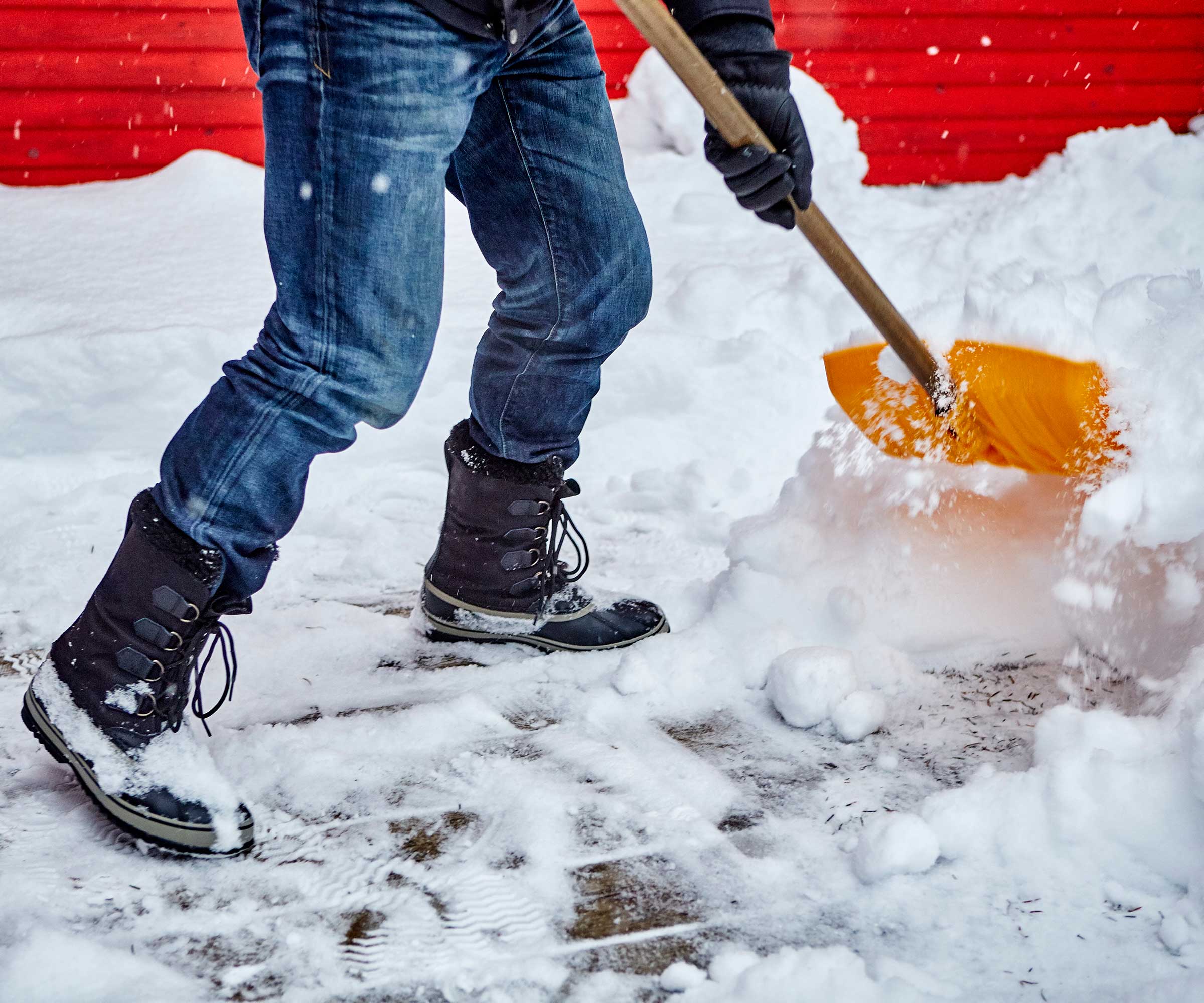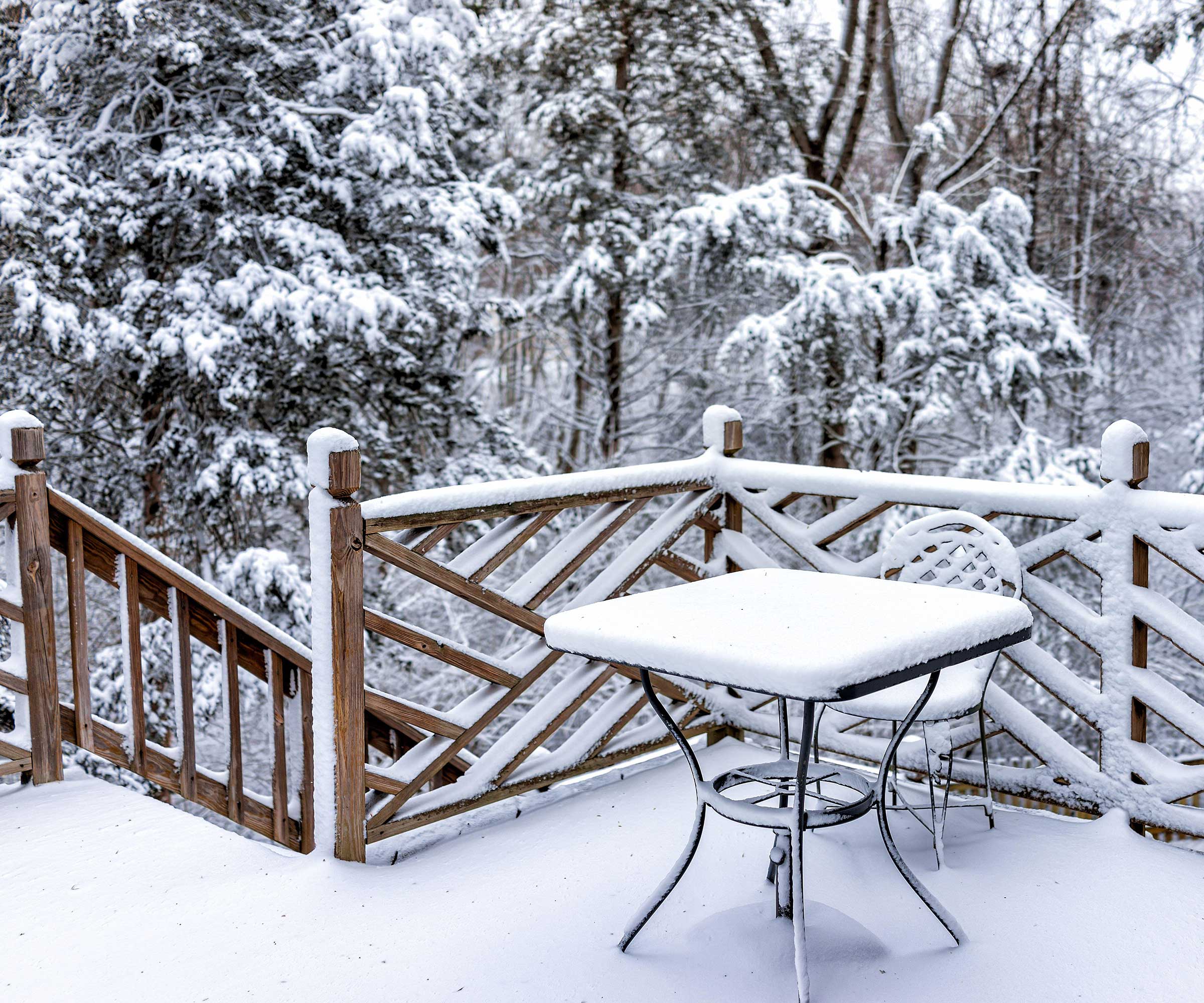
As temperatures plummet and frost and snow set in, our outdoor hardscaping can become hazardous. True, some areas can be avoided until the inclement weather passes, but sometimes this isn't practical – there are many instances where you'll still need to get from A to B without slipping over.
Maybe you need to get from your back door to your bird feeder to replenish it for hungry feathered friends, or you want to pop to your greenhouse to check on overwintering plants and seedlings. Perhaps you simply need to get to your car and back again everyday. Or maybe, you just want to be able to admire your winter garden in all its glistening glory. Whatever the case, these expert tips will help.

Expert advice for de-icing your yard
Get your garden paths, patios, and decking clear from snow and ice, without damaging them.

How to de-ice paths and patios
'Sweeping any debris or snow off your pavers shields them against the freeze-thaw cycle by keeping the area drier,' explains Joe Raboine of Belgard. 'A soft-bristled push broom makes the work more efficient.
'When the snow builds up, it’s tempting to reach for the snow shovel to clear your path. But metal shovels or those with sharp blades and points can scratch the surface of your pavers,' he continues. 'If you plan to use a shovel, make sure it’s plastic – but your best bet is a snowblower.'
This poly snow shovel from Bully Tools at Amazon is a popular choice.
Then, once the snow is cleared, it's time to think about de-icers, says landscaping expert Tom Su. 'There are a bunch of options out there, but not all are created equal.
'Rock salt (sodium chloride) is the old standby because it’s cheap and effective, but it can be harsh on plants and can damage concrete and wood over time,' he says. It can also deteriorate stone.
Calcium chloride or magnesium chloride are popular alternatives and are safer for nearby plants. They also work at lower temperatures, but they can be pricier, Tom points out. However, it's always important to double check products are suitable for your patio's specific material before applying them, and to avoid using them excessively.
Top tip: Sealing your pavers helps prevent damage from water and ice, as these elements can degrade the surface of pavers over time, says Joe. 'Applying a proper sealant every three years is recommended. Don’t overdo it – too much sealant leaves a film on pavers that can cause discoloration.'

Tom also suggests mixing your de-icer with sand. 'This not only helps it spread more evenly, but the sand also adds traction to slippery surfaces and reduces the amount of de-icer you need. Be strategic about where you apply it – focus on high-traffic areas and spots prone to icing, like steps and slopes.'
Remember, de-icing isn't always a one-time job. 'It's essential to regularly monitor the path and reapply de-icing materials as needed, especially during freezing temperatures,' says Jimmy Evans at San Diego Concrete Construction.
Top tip: Most commercial de-icers are unsafe for pets, causing symptoms such as skin irritation, ulcers, and gastrointestinal issues if ingested. In other words, if you have four-legged friends, use ice melts with extreme caution, or not at all.

How to de-ice decking
'For light snow dustings, you can use a simple broom in lieu of a snow shovel,' says Leslie Adkins of Trex Decking. 'If using a shovel, exercise caution, as certain materials can scuff or scratch your deck.' Just like with patios and paths, it's generally best to stick to plastic shovels for de-icing decks, as metal can cause damage.
'It’s also important to shovel with the direction of the board, which minimizes the risk of accidental dings and dents,' she adds.
'You also want to remove grime and debris from your deck before the cold weather sets in,' she continues. This includes sweeping away any fallen leaves to avoid having to clean residue they can leave behind.
When it comes to using de-icers on decking, proceed carefully. 'Avoid anything too harsh, as it can strip away finishes and damage the wood,' says Tom Su. Kerry Sherin, a home improvement expert at Ownerly, suggests using ice melts containing magnesium chloride or potassium chloride, since they are gentler on wood. As when de-icing pavers, check labels to ensure products are suitable for your deck – whether it's wooden or composite – before you use them.
Some homeowners also find that putting down rubber mats to create a temporary walkway can be helpful for a slippery deck during the winter months. Avoid putting down sand, gravel, or salt – these can scratch decks, notes Mallory Micetich of Angi.
Top tip: 'Applying a de-icer before a big freeze can prevent ice from bonding too strongly to the surface, making your job easier when it’s time to shovel,' says Tom.

FAQs
Where should you shovel snow in your backyard?
'You should only put snow piles on your lawn as a last resort,' says Mallory Micetich of Angi. If there is a drain grate on your property, try to put your snow pile as close to it as possible, she adds. 'If your backyard is the only suitable place for your snow pile, spread out the snow across the ground so it isn’t piled up in one spot.'
Can you use hot water to melt ice on your patio and deck?
Hot water is a quick way to de-ice hardscaping, but you have to be careful that it doesn't refreeze to create a sheet of dangerous ice. 'Make sure you act quickly and absorb any excess water with a towel to prevent it from freezing again,' says Mallory Micetich. 'It’s also a good idea to wait for the warmest part of the day to remove ice using hot water.'
How can you de-ice a yard in an environmentally-friendly way?
Cristina Solis, a sustainability expert, says to opt for de-icers labeled with EPA approval. 'These products adhere to specific environmental guidelines, minimizing the potential harm that conventional de-icers can cause to plants, waterways, and wildlife,' she explains. 'The EPA's Safer Choice label takes into account different factors to guarantee that these products are safer and more environmentally friendly than typical de-icers. This assessment includes meticulous scrutiny for factors like carcinogenicity, potential harm to aquatic life, and the degree of persistence within the environment.'
Cristina also lists some other de-icer options, including fireplace ash, alfalfa meal, coffee grounds, or pickle brine. 'These environmentally-friendly alternatives are safer for plants and pets compared to conventional chemical de-icers,' she says.
Once winter's over, Tom suggests giving your paths and decking a good wash to remove any residual de-icer. If it's been a while since you last did it, now can also be a good time to stain a deck.
That way, your hardscaping will look its best again, ready for enjoying the springtime warmer weather.







